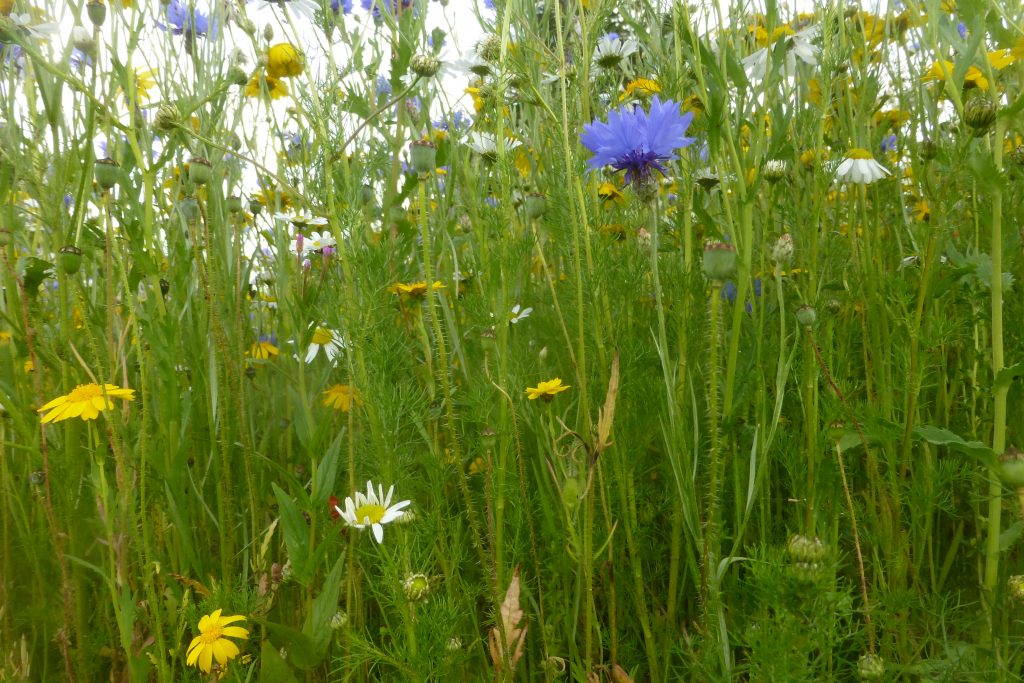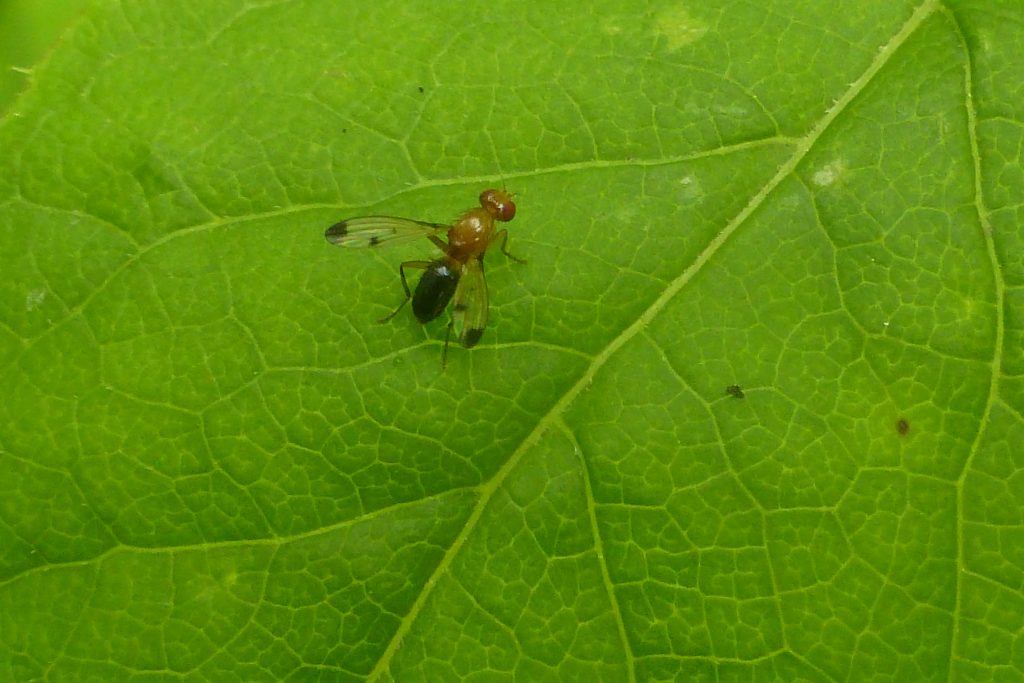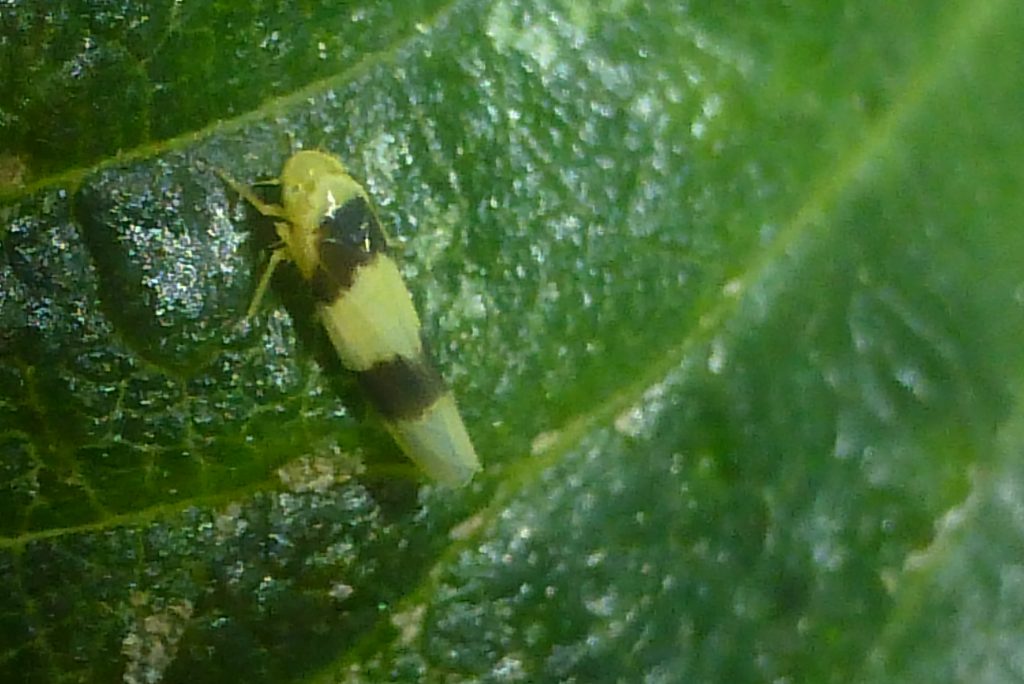July did indeed start with a heat wave as hinted in June’s report, but once that ended it was all downhill with much of the month being wet and on the cool side. Another seven species were added to the Garden’s list, bringing it up to 764, although one had been seen last month and only identified during July; this was Tachydromia cf. umbrarum, a small fly with black-and-white chevron markings on the wings, sighted on 22 June on birch bark.
Birds Once again, 36 bird species were recorded in the Garden during July. Most were commonly recorded species although Buzzard was spotted on both 3rd and 5th. House Martin was recorded on 7th, and there were two more Swallow sightings (9th and 23rd) as well as two of Swift (5th and 6th). The first Black-headed Gull to visit the Garden after their breeding season was on 10th and there were two other sightings on 23rd and 24th. Oystercatcher flying over the Garden three days in a row (20th-22nd) made it seem quite autumnal. The ‘summer quiet’ of songbirds really took hold from mid-month, when recording birds, as usual, became much more difficult: in the first week or so, over 20 species were recorded nearly every day (with 29, the month’s best count, on 5th), but by the end of the month it was a struggle to record more than 15 on any given day. The full list of species recorded was: Blackbird, Blackcap, Black-headed Gull, Blue Tit, Bullfinch, Buzzard, Carrion Crow, Chaffinch, Chiffchaff, Coal Tit, Dunnock, Feral Pigeon, Goldcrest, Goldfinch, Great Spotted Woodpecker, Great Tit, Greenfinch, Grey Heron, Herring Gull, House Martin, Jackdaw, Lesser Black-backed Gull, Long-tailed Tit, Magpie, Mallard, Moorhen, Oystercatcher, Robin, Song Thrush, Sparrowhawk, Stock Dove, Swallow, Swift, Tree Creeper, Wood Pigeon, Wren.
Insects and other invertebrates: Five butterfly species were recorded during July: Comma (9th), Small Tortoiseshell (6th), Small White (2nd and 30th), Green-veined White (24th) and Ringlet (10th and 30th). The poor weather most of the month meant that sightings of even common species like the whites were very few. A Silver-ground Carpet moth was seen on 2nd, a Brimstone (moth, not the butterfly of the same name) at the edge of the Chinese Hillside on 21st, and the alien micro-moth Blastobasis adustella on 28th. The mines of five leaf-mining moths were recorded. Twenty species of hymenopterans (bees, wasps, ants, sawflies etc.) were recorded. Wool Carder Bees were seen throughout the month at several locations within the Garden including for the first time the Upper Woodland where they visited a yellow-flowered foxglove (Digitalis). Field Digger Wasps were seen on the limestone bank next to the New Alpine House for the second year running (28th), but Tree Bumblebee was not seen during the month. Heterarthrus aceris was a new Garden record. Another Azure Damselfly was seen on the Scottish Heath Garden lochan (3rd) but 2015 has been a very poor year for them. Nine hoverfly species were seen, with Xylota sylvarum being a new Garden record. Leaf-mining flies, or at least their mines, were more abundant and diverse with 17 species being recorded. Among other flies, Geomyza balachowskyi (a picture-winged fly: 10th) and the gall-forming Anisostephus betulinus were new Garden records. Forest (Red-legged) Shield Bug was seen on 10th and nine other bugs and aphids were recorded; two of them, the froghopper Neophilaenus lineatus (29th) and the very distinctively marked leafhopper Zonocymba bifasciata (24th) were the remaining two new Garden records. Two-spot and Seven-spot Ladybirds were seen on three and four occasions respectively and Common Red Soldier Beetles were much in evidence in the wilder parts of the Garden from 10th till the month’s end, particularly liking flower-heads of thistles, umbels and daisy-like flowers. A Common Earwig was seen on 6th. Cucumber Spider was seen on 6th and the galls of seven species of gall mite were found. At least two other spiders remain unidentified and could become new records. Finally, White-legged Snake Millipedes were seen by the Herbarium on 28th-30th.



